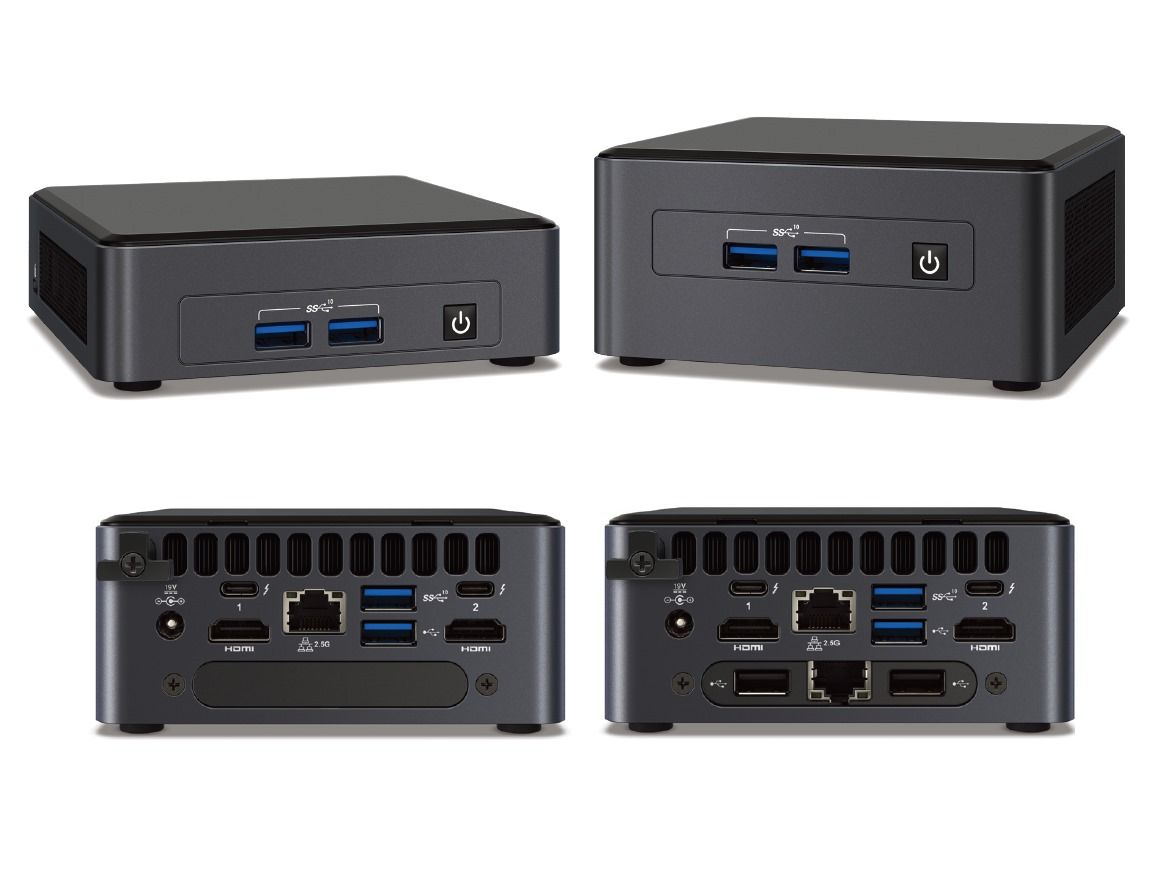Hardware Highlight: Mini desktop PCs/ HTPCs

Welcome to this week's post! Today we are discussing the Intel Next Unit of Computing (NUC) and similar products like the ASUS PN50 (AMD based NUC clone). In recent years, AMD has risen above both its former self, and Intel in terms of CPU line ups and pricing of hardware. This has created a more balanced arena where the two can compete again rather than products stagnating and consumers paying higher prices. In any case, we are here to discuss mini desktop PCs to include both the Intel NUC and systems like the ASUS PN50 – both of these systems are aiming at the same market. The Intel NUC was originally launched in 2013 after years of research and development, and other systems like the PN50 didn't release until the last five years or so, after AMD had been hard at work competing against Intel with it's Ryzen and ThreadRipper series processors.
In the context of the Intel NUC and PN50, these types of systems are roughly 5" × 5" squares, and their height varies from model to model – some offering extra I/O ports, some offering extra space for Solid State Drives (SSDs), and even modular sections for adding custom ports to the device. Latest models ship with USB-C 4 and Thunderbolt 3/4, a plethora of USB-A 3.2 ports, Ethernet, Display Port, and HDMI. Some models offer VGA, serial, and other I/O ports that are seen less often these days, and these are usually a part of the modular sections discussed above. As long as you get a system with at least four physical cores, 16GB of RAM, and either Intel Iris Xe or AMD Vega graphics, you will be in a pretty good place as far as desktop computing or Home Theater Personal Computers (HTPCs) are concerned.
These things pack a huge punch for their size. Generally speaking, as long as you aren't doing a ton of video rendering or playing super taxing Triple-A (AAA) games, these systems are fantastic to have at home and in the office. Admittedly, you could buy some of the systems meant for gaming, or add an external GPU and connect it via USB-C and use it as a gaming PC (we have seen this done a few times!); or you could buy one of the systems dedicated for those types of activities, code names Intel Skull Canyon and Phantom Canyon. These systems are usually VESA compatible, and as long as you have a monitor that is also VESA compatible, you can mount these directly onto the back of your monitor. That sure beats having a massive desktop computer on your desk or at your feet. Many of these run at less than 40 Thermal Design Power (TDP), which means they are low power, don't generate a ton of heat, and are a lot easier on our power bills (and more planet-friendly!).
Your mind is the limit as far as what you can use these for, too! At Nottingham Nerds we have utilized these systems as low powered servers for running personal cloud services (local network, privacy friendly), game servers, file storage servers, web servers, and for self hosted software like Jellyfin and Nextcloud. We've also setup or seen these systems used in schools, offices, and homes, used for presentations in conference rooms, as desktop computers for office personnel and families, as thin clients in a corporate setting, as teleprompters, by college students for the space-saving design, by families in the kitchen for cooking/recipes, in shops for manuals and troubleshooting, as a mini virtualization machine for the home or small business, a retro gaming machine, as a home automation/smart home server, as digital signage, and as Home Theater PCs for streaming online content (or offline content with Jellyfin!). Plus, since these systems are so small, you could take it with you on trips and use it in a hotel or at your home away from home during the winter season so long as you have a TV/monitor and a portable keyboard and mouse. It could also be used as the family computer for small projects or homework. The possibilities are endless.
If you're interested in these systems, go ahead and check out our products page and take a look at the specifications. We have been using these systems for close to seven years and haven't had any failures yet! We custom build these devices for our customers for a plethora of different use cases and would be happy to find a solution that best fits your needs! Have a good week!
